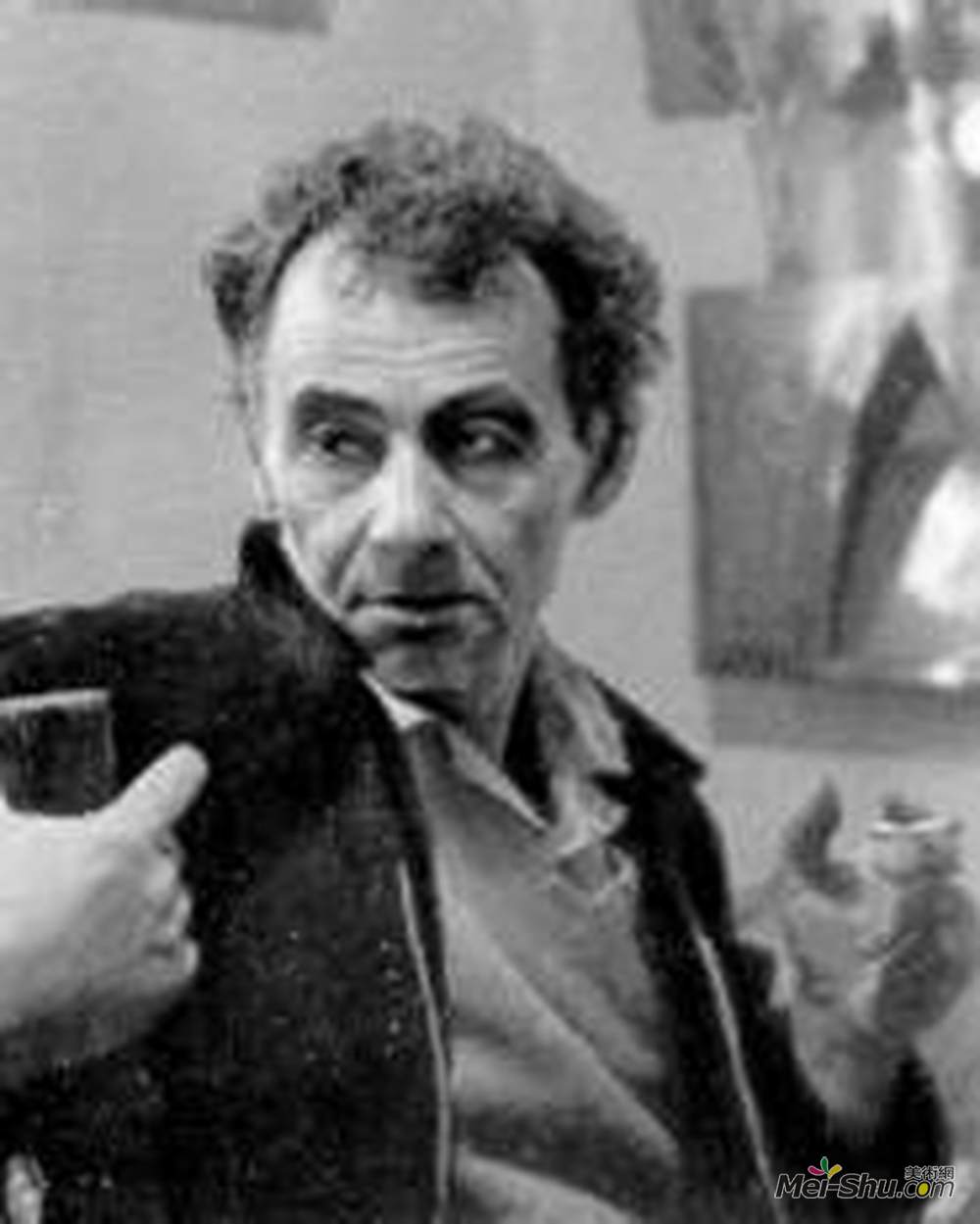
哈鲁蒂恩加伦茨(Haroutiun Galentz)
艺术家: 哈鲁蒂恩加伦茨
生于: 1910年4月10日;gürün,土耳其
卒于: 1967年5月07日;亚美尼亚耶勒万
国籍: 亚美尼亚
流派: 立体主义,当代现实主义
领域: 绘画,绘画
Galentz于公元1910年出生于G &gp;252;R &&gp;252;n,奥斯曼帝国(今土耳其)。他的父亲Tiratur拥有一个羊毛染色厂,给年轻的加伦茨留下了深刻的印象,它的颜色鲜艳。1915,在亚美尼亚种族灭绝中,Galentz的父亲被土耳其士兵带走,从此再也见不到了。加伦茨和他的三个兄弟和母亲逃到了叙利亚的阿勒颇。在艰苦跋涉到阿勒颇的几天之后,Galentz的母亲死于饥饿和疲劳。Galentz和他的三个兄弟在阿勒颇的孤儿院度过了他们的童年和青年时代。尽管孤儿院生活艰难,Galentz还是从孤儿院姐妹的鼓励中培养了他对艺术的热爱。他经常逃离孤儿院漫游阿勒颇市场,画画。法国艺术历史学家称他为“没有童年的人”。
1922,12岁时,Galentz离开孤儿院成为一名石匠的学徒,后来在阿勒颇接受了奥尼克阿维蒂桑的艺术教育。然后他跟随他的兄弟来到黎巴嫩的的黎波里,在那里他们开了一个摄影棚。加伦茨画的背景在照片会议中使用。1929年至1933年,法国画家Claude Michulet是贝鲁特美术学院的老师,在那里他执教绘画直到1939。< / P >加伦茨被1939纽约国际展览主席团授予奖章,黎巴嫩政府颁发荣誉奖。或他在黎巴嫩馆展出的《浮雕》在纽约国际展览中展出。 1938,他以Armine Paronyan(Galunz)的名字,在1943年5月2日学徒后,娶了一位年轻女子为学徒。阿迈恩和丈夫一起成为亚美尼亚著名画家。他们有两个儿子,亚曼和萨罗(生于1946年),他也是一名画家。Galentz一家于1946年6月移居亚美尼亚的埃里温。第二年,他参加了一个组织展览,展示新外籍画家的作品。他参加了艺术家联盟组织的团体展览,自1947以来他是会员。他曾在埃里文和莫斯科举办过几次个人表演,并在1967年被追授亚美尼亚共和国国家奖。根据亨利克·伊吉特扬的说法,&看着格兰特斯的光辉、欢快的画作,回想起他那双善良、安详的眼睛,人们发现不可能意识到这个安静、悲伤的人是那些明亮、乐观的诗歌故事的作者".亚历山大·吉托维奇献出了他的一首诗歌。Galentz女士。加伦茨是安特拉尼格·德扎鲁吉安的《没有童年的人》的英雄之一。加伦茨在埃里温的房子现在是一个博物馆。他的画作还收藏在亚美尼亚国家美术馆(埃里温)、埃里温现代艺术博物馆、亚美尼亚共和国文化部以及莫斯科、圣彼得堡、第比利斯、纽约、巴黎、维也纳、贝鲁特、阿勒颇、剑桥、旧金山、洛杉矶的私人收藏品中。2010年4月27日,在埃里温,加伦斯特海峡18号博物馆开幕。博物馆里有200幅油画和200多幅图画作品,其中包括档案资料。博物馆有两层。Harutyun Galents的作品陈列在一楼。Artist :Haroutiun Galentz
Additional Name :Հարություն Կալենց
Born : Gürün, Turkey
Died : Yerevan, Armenia
Nationality :Armenian
Art Movement :Cubism,Contemporary Realism
Field :painting,drawing
Galentz was born in Gürün, Ottoman Empire (present day Turkey) on March 27 of 1910. His father Tiratur owned a wool-dying factory which left a profound impression on young Galentz with its vats of bright colors. In 1915, during the Armenian genocide, Galentz’ father was taken away by Turkish soldiers, never to be seen again. Galentz along with his three brothers and mother escaped to Aleppo, Syria. A few days after their arduous trek into Aleppo, Galentz’ mother died of starvation and fatigue. Galentz and his three brothers spent their childhood and youth in an Aleppo orphanage. Despite the hardships of life in the orphanage, Galentz began cultivating his passion for arts in part by encouragement from one of the orphanage sisters. He often escaped the orphanage to roam around the Aleppo markets and paint. French art historians called him "The man who had no childhood".
In 1922, at the age of 12, Galentz left the orphanage to become an apprentice to a lithographer and later received his primary artistic education from Onik Avetisyan in Aleppo. He then followed his brothers to Tripoli, Lebanon where they had opened a photo studio. Galentz painted backgrounds to be used in the photo sessions. From 1929-1933, French painter Claude Michulet was his teacher in Beirut Academy of Fine Arts, where he then taught painting until 1939.Galentz was awarded the Medal of Merit by the presidium of International Exhibitions in New York in 1939, and the honorary prize by the government of Lebanon for his bas-reliefs in the Pavilion of Lebanon presented at the New York International exhibition.In 1938 he took into apprenticeship a young woman by the name of Armine Paronyan (Galentz), whom he later married on May 2, 1943. Armine became a prominent Armenian painter alongside her husband. They had two sons, Armen and Saro (b. 1946), who is a painter too.Galentz and family expatriated to Yerevan, Armenia in June 1946. The next year he participated in a group show organized to exhibit the works of newly expatriated painters. He participated in group exhibitions organized by the Artists Union, of which he was a member since 1947. He held several solo shows both in Yerevan and in Moscow and was posthumously awarded Armenian Republic’s (SSR) State Prize in 1967.His landscapes and still lifes are imbued with light. According to Henrik Igityan, "looking at the radiant, cheerful paintings of Galents, remembering his kind uistful eyes, one finds it impossible to realize that this quiet sad man is the author of those bright optimistic poetic tales".Alexander Gitovich dedicated one of his poems to Galentz. Galentz is one of the heroes of "People without childhood" by Antranig Dzarugian.Galentz’ house in Yerevan is now a museum. His paintings are also in the collections of National Gallery of Armenia (Yerevan), Yerevan Modern Art Museum, Republic of Armenia’s Cultural Ministry as well as private collections in Moscow, Saint Petersburg, Tbilisi, New York, Paris, Vienna, Beirut, Aleppo, Cambridge, San Francisco, Los Angeles to list a few.On April 27, 2010 Haroutiun and Armine Galentz museum was opened in Yerevan, Galents Str. 18. There are 200 canvases and more than 200 graphical works in the museum, including archive materials. The museum has two floors. Harutyun Galents’s works are displayed on the first floor.